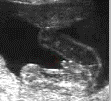Gender selection

Sex selection, also known as gender selection, has attracted great interest and controversy over the years. Gender selection has been associated with a number of ethical, moral, social and legal issues. Sex selection may be performed for medical reasons to avoid sex-linked diseases such as hemophilia and Duchenne’s muscular dystrophy, and is acceptable in many countries such as the United Kingdom, USA and Australia.
Should parents be able to choose baby's sex?
Gender selection for family balancing purposes is a very controversial issue. Should a couple be free to choose the sex of their child? For some the answer is yes because it is a fundamental right, while for others it is a threat to society.
What are the methods of gender selection?
Preimplantation genetic disease (PGD)
The method of choice in gender selection is preimplantation genetic diagnosis (PGD) using FISH or PCR techniques. It is a reliable method.It allows identification of the gender with 99.9% accuracy as well as screening for most common genetic disorders, making sure the baby does not possess a serious genetic condition. PGD is suitable for men with substandard sperm parameters. However,it is very expensive, costs approximately 15,000 US dollars. Furthermore, it does involve an invasive in-vitro fertilization (IVF) treatment. .
Seperation of sperm
The separation of sperm bearing X and Y chromosomes may also be used for sex selection. This technique exploits the fact that sperm carrying the Y male chromosome is smaller and faster than the female chromosome X. Sperm separation techniques have improved greatly over the past few years. Currently, the method of choice is microsort sperm separation. It yields an accuracy rate of over 90% for X chromosomes, and over 80% for Y chromosome. The woman is then artificially inseminated with the chosen batch of sperm. These techniques are noninvasive and less costly compared to PGD. MicroSort IUI has similar success rates to conventional IUI treatment success rates, which is about 15-25% for women younger than 35 years of age, and about 8-10% for women older than 35 years of age and younger than 40 and less than 5% for women older than 40. Microsort IUI is not suitable for men with poor sperm quality and or quality. Currently there is no data available regarding the long-term risk of flow cytometry. MicroSort is currently not available in the United Kingdom nor in the United States for family-balancing purposes. The technique is awaiting FDA approval for clinical use in USA.
Prenatal testing
The third method of sex selection involves prenatal testing of the embryo or fetus. There are different methods of doing this.
- Ultrasound: Ultrasound scanning allows fetal sex determination only in the second trimester by visualization of external genitalia. It is a non-invasive technique but not 100% reliable. Amniocentesis and chorionic villus sampling (CVS) both are more reliable than the ultrasound scan but are invasive and are associated with a risk of miscarriage of 1-2%.
- Amniocentesis: In amniocentesis a small amount of the fluid surrounding the baby in the womb is aspirated. This fluid contains cells from the baby which can then be cultured and tested to determine the baby's chromosome. The procedure is usually performed under ultrasound scan using a fine needle. The risk of causing miscarriage by this procedure is between 0.5 - 1%. The results often take two to three weeks.
- Chorionic villous sampling (CVS): In this procedure a biopsy from the placenta is taken to test the fetus’ genetic make-up. The placenta has the same genetic make-up as the baby. It is usually carried out under ultrasound scan at about eleven weeks of pregnancy. There is a 2-3% risk of the procedure causing a miscarriage. Fetal sex determination is performed by karyotyping.
- NIPT (Non Invasive Prenatal testing). Analysis of fetal cells from maternal blood is a promising new development, Studies have shown that fetal cells and DNA are present in maternal blood from the eighth week of pregnancy. So, by simply taking a 2ml blood sample from the woman when she is 10 weeks pregnant, one can extract fetal cells and analyse them using FISH technique to examine the Y chromosome. There have, however, been concerns about the accuracy of the test because fetal cells can remain in a pregnant woman‘s blood for decades and persistence of fetal cells in maternal blood from previous pregnancies may lead to potential false results. This is contrast to Fetal DNA which is rapidly cleared after delivery. NIPT method analyse cell free fetal DNA in the pregnant mother blood, The accuracy has been reported over 99%. It also screen for common chromosomal abnormalities such as Down Syndrome, Edward Syndrome. There is no risk of miscarriage after NIPT. In about 3% of patients no enough fetal DNA will be present in the maternal blood and the test may need to be repeated. Reliable fetal sex determination can now be achieved using SRY gene amplification of fetal DNA in maternal blood.
Measures such as timing intercourse, ovulation induction, etc. do not appear to significantly affect the sex ratio.
The law regarding gender selection
Most countries prohibit the performing of a treatment procedure or the use of sperm or embryos with the purpose of producing, or attempting to produce, a child of particular sex, unless to avoid the risk of genetic transmission of sex-linked diseases. In the United Kingdom, all licensed centres are forbidden from carrying out such procedures unless for medical reasons. However, non-licensed centres can perform gender selection by sperm separation and intrauterine insemination using husband or partner sperm. There are few centres in the United Kingdom which offer such services such as the London Gender Clinic, and its sister clinics in Glasgow and Birmingham.